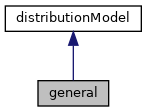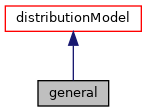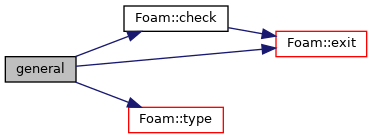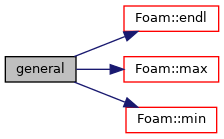Particle-size distribution model wherein random samples are drawn from a given arbitrary probability density function or cumulative distribution function. Input distributions are specified as pairs of (size, probability) (i.e. (point, value) ).
More...
|
| | TypeName ("general") |
| |
| | general (const dictionary &dict, Random &rndGen) |
| |
| | general (const UList< scalar > &sampleData, const scalar binWidth, Random &rndGen) |
| |
| | general (const general &p) |
| |
| virtual autoPtr< distributionModel > | clone () const |
| |
| void | operator= (const general &)=delete |
| |
| virtual | ~general ()=default |
| |
| virtual tmp< scalarField > | x () const |
| |
| virtual tmp< scalarField > | y () const |
| |
| virtual scalar | sample () const |
| |
| virtual scalar | meanValue () const |
| |
| virtual void | writeData (Ostream &os) const |
| |
| virtual void | readData (Istream &os) |
| |
| virtual dictionary | writeDict (const word &dictName) const |
| |
| virtual void | readDict (const dictionary &dict) |
| |
| | TypeName ("distributionModel") |
| |
| | declareRunTimeSelectionTable (autoPtr, distributionModel, dictionary,(const dictionary &dict, Random &rndGen),(dict, rndGen)) |
| |
| | distributionModel (const word &name, const dictionary &dict, Random &rndGen) |
| |
| | distributionModel (const distributionModel &p) |
| |
| virtual | ~distributionModel ()=default |
| |
| virtual scalar | minValue () const |
| |
| virtual scalar | maxValue () const |
| |
Particle-size distribution model wherein random samples are drawn from a given arbitrary probability density function or cumulative distribution function. Input distributions are specified as pairs of (size, probability) (i.e. (point, value) ).
- Usage
- Minimal example by using
constant/<CloudProperties>: subModels
{
injectionModels
{
<name>
{
...
sizeDistribution
{
type general;
generalDistribution
{
cumulative false;
distribution
(
(<size1> <probability1>)
(<size2> <probability2>)
...
(<sizeN> <probabilityN>)
);
}
}
}
}
}
where the entries mean:
| Property | Description | Type | Reqd | Deflt |
type | Type name: general | word | yes | - |
generalDistribution | Distribution settings | dict | yes | - |
distribution | <size>-<probability> pairs | dict | yes | - |
<size> | Particle size | scalar | yes | - |
<probability> | Volume fraction/probability | scalar | yes | - |
cumulative | Flag to determine if input distribution is specified as cumulative or as density | bool | no | false |
- Note
- An example for a pair within
distribution subdictionary can be given as follows: "(1e-07 1.3)" means 1.3% of particles are modelled with a particle diameter of "1e-7" [m], and so on.
- Variation between input pairs is assumed to be linear.
- Elements in the second column (i.e. probability) are normalised.
- Elements in the second column for cumulative distribution functions must start from zero and must be non-decreasing (i.e. monotonic).
- Elements in the first column (i.e. size) must be specified in an ascending order.
- Input pairs cannot contain any negative element.
- Source files
-
Definition at line 169 of file general.H.


 Public Member Functions inherited from distributionModel
Public Member Functions inherited from distributionModel Static Public Member Functions inherited from distributionModel
Static Public Member Functions inherited from distributionModel Protected Member Functions inherited from distributionModel
Protected Member Functions inherited from distributionModel Protected Attributes inherited from distributionModel
Protected Attributes inherited from distributionModel







